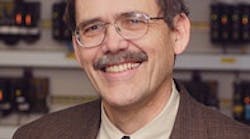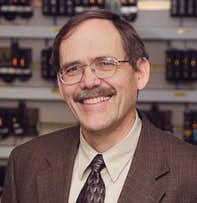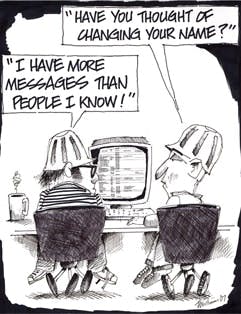By Greg McMillan and Stan Weiner, PE
Greg: What are the two applications you worked on with biggest benefit?
Terry: Within Monsanto, some control technology had been developed for improving the control of ammonia plants. When I first started work with Fisher Controls in the early 70s, one of my first assignments was to work on the conversion of this ammonia package for use in our computer product, and then to start up this technology in a number of plants in the U. S. and Canada. The tools that we had at that time for implementing digital control were quite primitive. Over time we were able to improve the product and developed some of the basic control and interface tools later incorporated into the DCS. The control that we applied was focused on a few critical loops in the ammonia plant. In many cases, the slow process dynamics and the need to interface and work with analytical measurements, such as a gas chromatograph, made the commissioning of these systems very challenging. However, the payback in terms of increased throughput of anywhere from 1% to 2% was enough to quickly pay for the control system installation. Also, in some areas, we improved the overall plant efficiency.
In my later work within Fisher Controls, I led the technical work to transfer recovery boiler technology developed by McMillan-Bloedel, a major Canadian pulp and paper company (now Weyerhaeuser). This technology led to projects in other areas of the mill and facilitated a relationship with many pulp and paper customers.
In one such instance, Harry Pinder, who headed up Georgia Pacific’s corporate control group, gave us the opportunity to look at better ways to automate the recauticizing area at the Crossett mill.
One of the more challenging projects I tackled there was the lime kiln control system. The long process delays, high degree of interaction and operating constraints of the kiln hot- and cold-end temperature control posed a real challenge. The solution I designed using traditional tools was highly successful and was the basis for the lime kiln control package. This application is now implemented using model-predictive control. For these installations, the fuel consumption per ton of lime product is down on average by more than 10%. With the price of natural gas and oil today, such a reduction in energy consumption can have a large impact on mill operation economics.
Stan: What were your greatest technical achievements?
Terry:In 1990 I was invited to join the technology department to lead the team working on the concepts for the control tools that would be introduced in our future control system. At that time, the first drafts of the IEC1131 standard were being circulated for review, and this had a significant impact on this work. We explored object-oriented technology and how it could be u
sed in both design and implementation of the control system. Many of this team’s ideas, such as graphic techniques of control definition using function block and sequential function charts, form the foundation for the tools that were incorporated into the DeltaV control system.
When the Interoperability Systems Project was organized by Siemens, Rosemount, Fisher Controls and Yokogawa, I was asked to lead the team that wrote the function block specification. When this effort migrated into the Fieldbus Foundation, I remained as the function block team lead.
This work was very rewarding. It was an opportunity to share ideas with some of the best engineers in our industry. The function block specification written by this team is the basis for the user-layer application in Foundation fieldbus devices. It also strongly influenced the user layer in Profibus and the international standard IEC 61804. Many of the latest control systems have adopted the model developed through the Fieldbus Foundation specifications.
Greg: What are the two greatest opportunities in process control today?
Terry: I agree with Sheldon Lloyd about the opportunity to improve operations within the process industry through education on process control basics. Many of the engineers that helped install, commission and maintain today’s modern control systems are retiring, and it’s a challenge to transfer their knowledge to engineers replacing them.
|
CLICK HERE |
I am very excited about the possibilities of wireless. In many cases, the introduction of wireless transmitters is making control system manufacturers re-evaluate how remote I/O and control-based wireless inputs are incorporated into the control system. We also have an opportunity to make information needed in the field more available to instrument technicians through new maintenance tools.
Greg: Terry’s skill spans all levels of process control and is a key part of many technical innovations, and in spite the increasing demands for his expertise, he has always taken the extra time to provide careful detailed answers and guidance to anyone seeking his help. This brings to mind the “Top Ten Signs You Are the Key Person.”
10. You remember when valves were valves.
9. You calibrated a positioner.
8. You started up loops before the days of auto tuners.
7. Your company asks you what you want to do.
6. People are praying that you don’t retire.
5. Your director’s goals look a lot like your own.
4. You have more email messages per day than minutes in the day.
3. People have to take a number to see you.
2. Your VP calls you for a briefing before departmental meetings
1. Your brain is insured by Lloyds of London.
This Month’s Puzzler: Can You Throw Ziegler Nichols for a Loop?
If you tuned a loop with the Ziegler Nichols reaction curve method, what is an easy solution to make the response less oscillatory? Send an e-mail with your answer to the Puzzler, CONTROL questions, or comments to [email protected].
| About the Authors |
Greg McMillan and Stan Weiner, PE bring their wits and more than 66 years of process control experience to bear on your questions, comments and problems. Write to them at [email protected].








